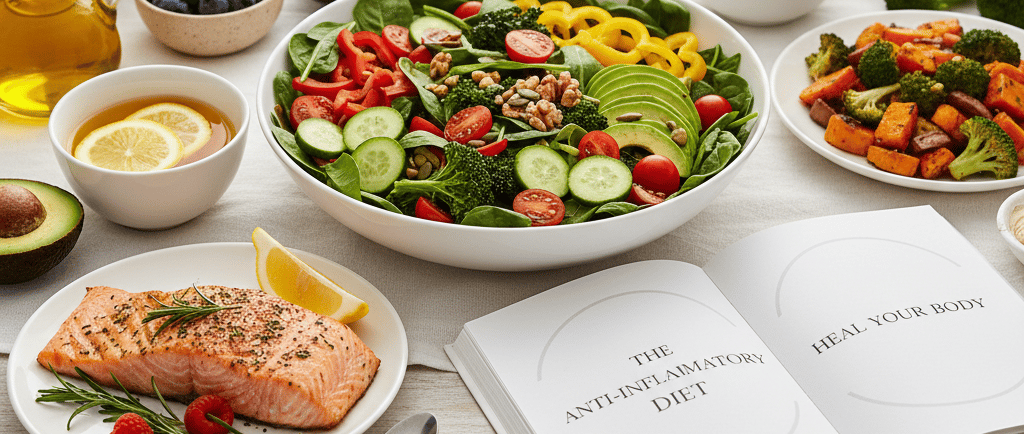The Anti-Inflammatory Diet: What It Is and How It Heals Your Body
Explain the science behind inflammation, its link to autoimmune conditions, and how nutrition helps reduce it naturally.
10/7/20252 min read


Your body’s inflammation is a natural response — it’s how your immune system protects you from injury or infection. But when inflammation becomes chronic, it can quietly damage your tissues and lead to fatigue, digestive problems, skin issues, and even autoimmune conditions.
That’s where the anti-inflammatory diet comes in — a way of eating that supports healing, balances your immune system, and nourishes your body from within.
What Is an Anti-Inflammatory Diet?
An anti-inflammatory diet focuses on whole, nutrient-dense foods that help calm the body’s inflammatory response. Instead of counting calories, this approach encourages eating foods rich in antioxidants, fiber, healthy fats, and phytonutrients — all essential for reducing inflammation and supporting long-term health.
This diet is not a quick fix — it’s a lifestyle that helps your body restore balance and energy while protecting your organs, joints, skin, and gut.
Why Chronic Inflammation Matters
When inflammation becomes constant, your immune system stays in “alert mode.” Over time, this can contribute to:
Autoimmune conditions
Skin disorders (like psoriasis or eczema)
Digestive issues (like leaky gut or IBS)
Hormonal imbalances
Fatigue and brain fog
Joint pain and stiffness
Reducing inflammation through food gives your body the chance to heal and reset naturally.
Core Principles of the Anti-Inflammatory Diet
Here are the foundations of this healing way of eating:
🥦 1. Eat Whole, Real Foods
Focus on foods that come from nature — vegetables, fruits, nuts, seeds, and lean proteins. Avoid anything ultra-processed, fried, or high in refined sugar.
🥑 2. Add Healthy Fats
Omega-3 fatty acids from salmon, chia seeds, flaxseeds, and olive oil help regulate inflammation and support your brain and heart.
🌽 3. Choose Colorful Vegetables and Fruits
The brighter the color, the more antioxidants they contain. These compounds fight free radicals and help calm your immune response.
🌾 4. Avoid Trigger Foods
Common inflammation triggers include gluten, dairy, refined sugar, processed meats, and alcohol. Try eliminating them for a few weeks and notice how your body feels.
💧 5. Stay Hydrated
Water supports detoxification and helps your organs work efficiently. Herbal teas like ginger, turmeric, or green tea also have anti-inflammatory benefits.
Best Anti-Inflammatory Foods
Leafy greens (spinach, kale, arugula)
Berries (blueberries, strawberries, raspberries)
Fatty fish (salmon, sardines, mackerel)
Turmeric and ginger
Nuts and seeds (almonds, chia, flax, walnuts)
Olive oil and avocado
Garlic and onions
Green tea and matcha
Foods to Avoid
Refined carbohydrates (white bread, pastries)
Processed meats
Sugary drinks and sweets
Fried foods
Alcohol and trans fats
These foods promote oxidative stress and increase inflammation in the body.
The Benefits of Eating Anti-Inflammatory
Many people notice positive changes within a few weeks, such as:
✅ Improved digestion
✅ Better skin clarity
✅ Reduced joint pain
✅ More stable energy levels
✅ Mental clarity and mood balance
Your body begins to heal when you give it the right fuel.
The anti-inflammatory diet is more than just a food plan — it’s a commitment to your long-term wellness. By focusing on nourishing, healing ingredients and listening to your body, you can reduce inflammation, support your immune system, and feel energized from the inside out.
Start small — maybe by swapping your breakfast or adding one colorful meal a day — and let your body guide you on this journey toward healing.
